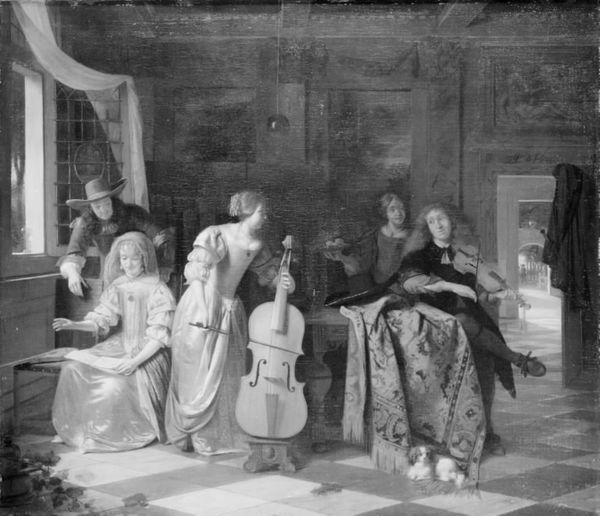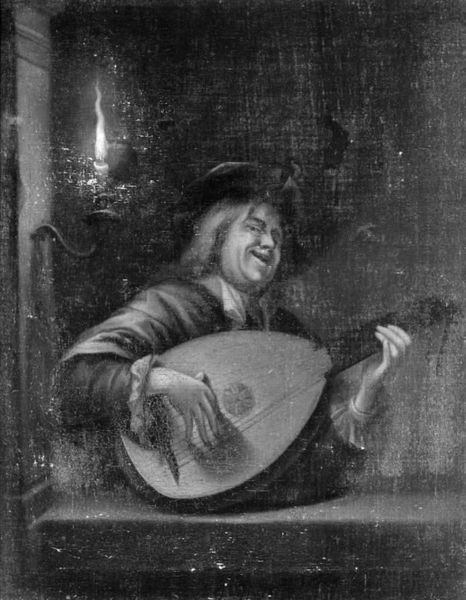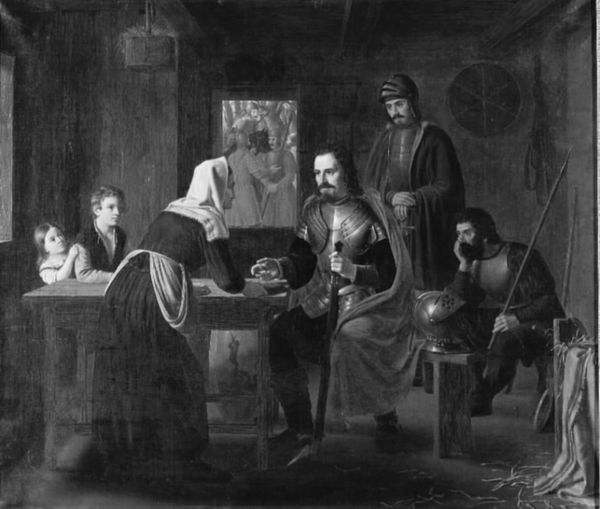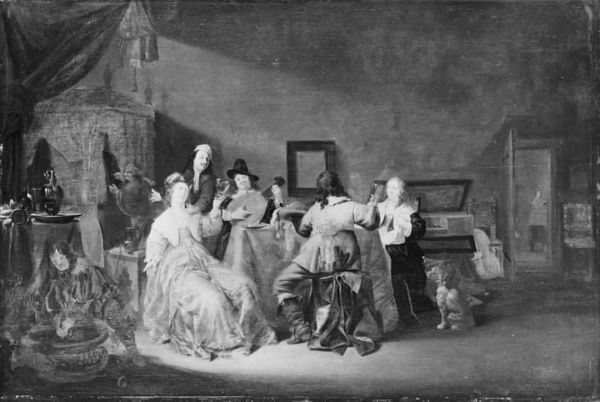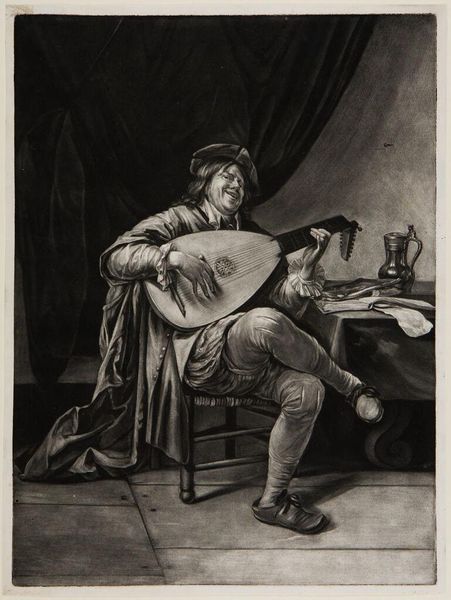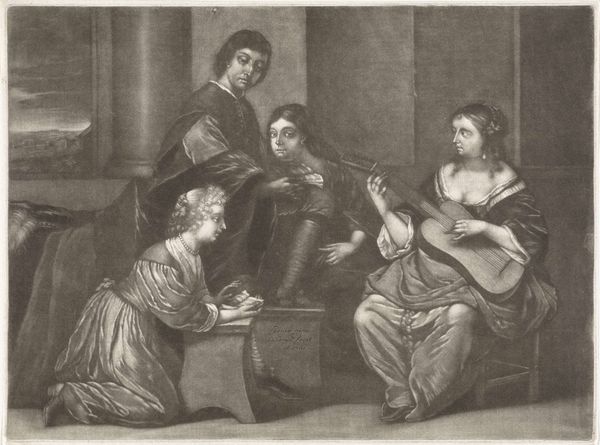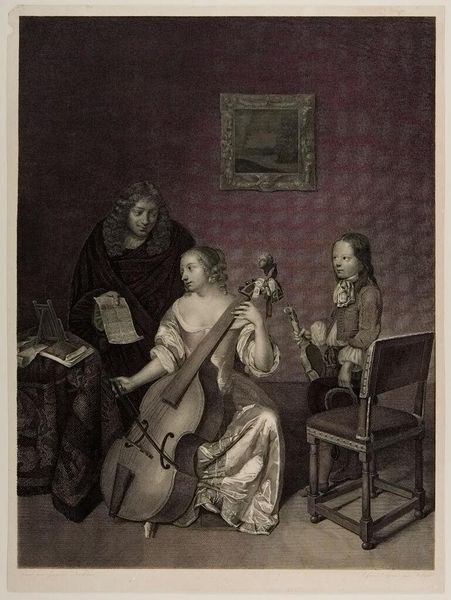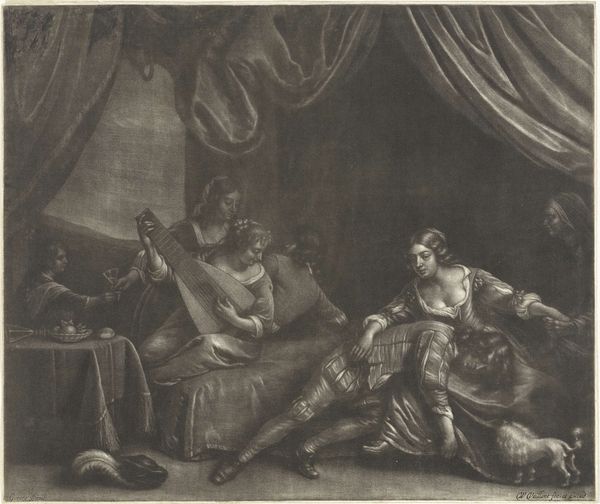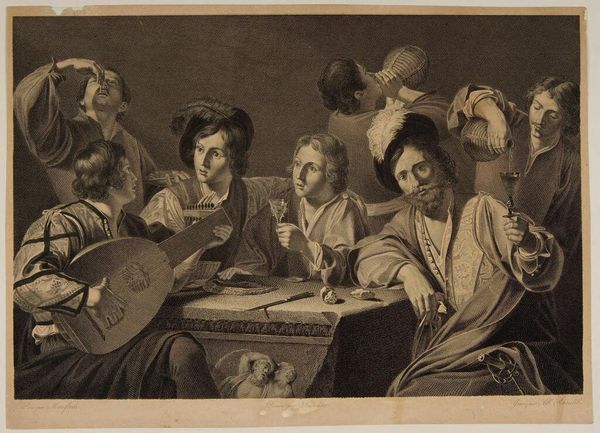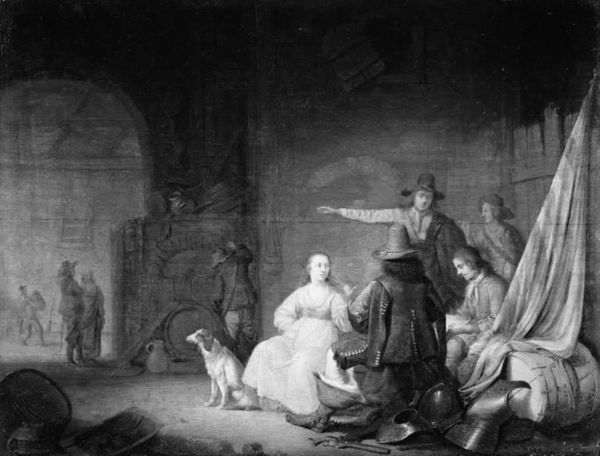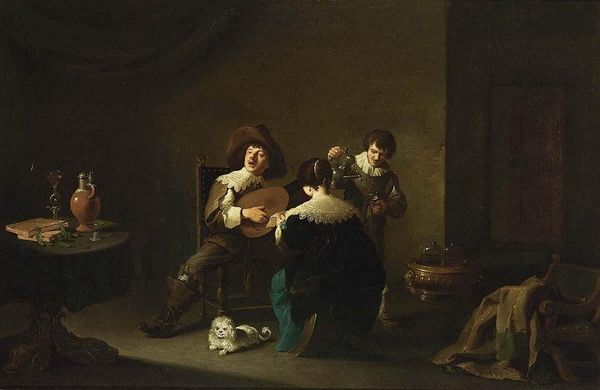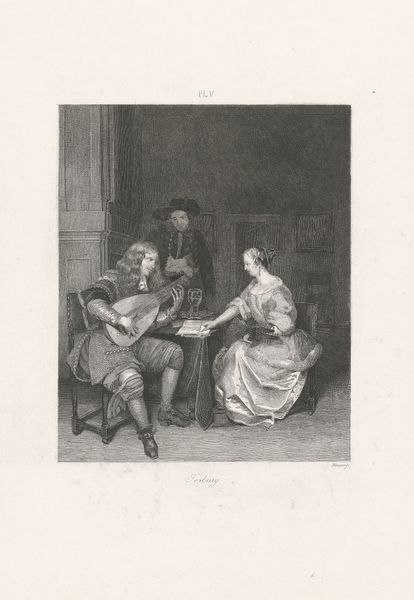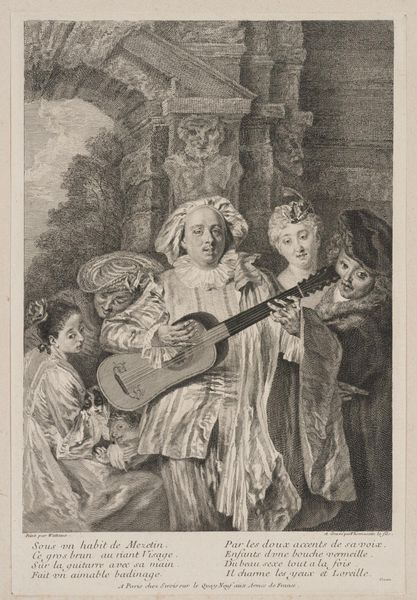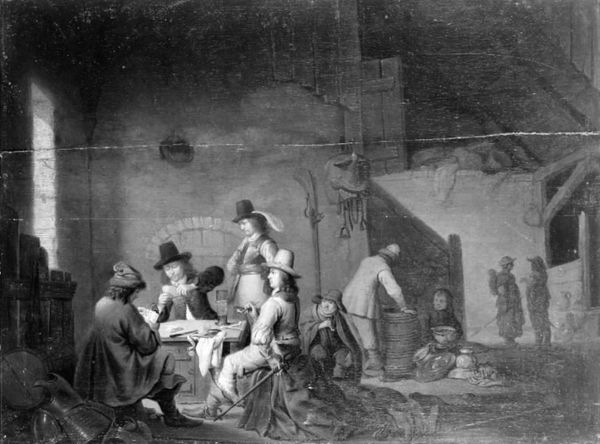
painting, oil-paint, wood
#
portrait
#
baroque
#
dutch-golden-age
#
painting
#
oil-paint
#
group-portraits
#
monochrome photography
#
wood
#
genre-painting
#
monochrome
#
monochrome
Dimensions: 47.3 cm (height) x 62.8 cm (width) (Netto)
Curator: Ah, "Guitar Player," painted by Anthonie Palamedesz sometime between 1616 and 1673. A wonderful example of Dutch Golden Age genre painting on wood, currently housed here at the SMK. Editor: There’s a palpable air of convivial disarray—like catching a glimpse of a moment just before everything spins slightly out of control. Is it the wine? The music? Curator: I'm particularly struck by the artist’s employment of chiaroscuro. Notice how light delineates the central figures: the guitarist, illuminated, set against the darker recesses of the room. Note the deliberate arrangement of objects—the table, the wine glass—they contribute to a compositional harmony. Editor: The lute, or guitar—depending on how you want to see it—is clearly symbolic here; an allusion to the pleasures of the senses and a carefree approach to life. It reminds us that even in the most prosperous of times, one should always pause and consider life's simple gifts. Curator: Semiotically, we see here the common trope of musical instruments associated with fleeting moments, yet consider how Palamedesz's geometric sensibility provides structure. Observe, too, the diagonal stress lines converging toward the player, lending gravity despite the apparent casualness. Editor: And isn't that the appeal of genre paintings such as this? Palamedesz creates a visual metaphor for harmony within chaos, reflecting universal symbols of celebration, camaraderie, and music, subtly placed within a Dutch cultural frame. Even the dog seems pensive about where the night may lead. Curator: In light of all we've noted, the piece as a whole provides, for me, less of a moment captured in time and more a structural exploration of the relationship between figures and form. Editor: And I come back to the dog. Surely its loyalty and quiet observance represent fidelity within the boisterous narrative! Overall, it's a work imbued with timeless symbols we all can relate to.
Comments
No comments
Be the first to comment and join the conversation on the ultimate creative platform.
